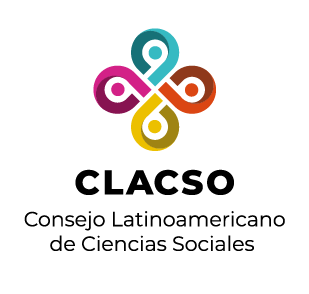Red de Bibliotecas Virtuales de Ciencias Sociales en
América Latina y el Caribe

Por favor, use este identificador para citar o enlazar este ítem:
https://biblioteca-repositorio.clacso.edu.ar/handle/CLACSO/236213Registro completo de metadatos
| Campo DC | Valor | Lengua/Idioma |
|---|---|---|
| dc.creator | Carreira, Ana María | - |
| dc.date | 2018-11-10 | - |
| dc.date.accessioned | 2023-03-27T19:22:00Z | - |
| dc.date.available | 2023-03-27T19:22:00Z | - |
| dc.identifier | http://revistascientificas.filo.uba.ar/index.php/payro/article/view/10479 | - |
| dc.identifier.uri | https://biblioteca-repositorio.clacso.edu.ar/handle/CLACSO/236213 | - |
| dc.description | The doctrinal chapel of Tópaga (Department of Boyacá-Colombia), inaugurated in 1642 by the Jesuit order, in the Kingdom of New Granada, gathers a vast and rich ornamentation inside: main altar, two pulpits, two tribunes, the altar of mirrors, and several minor altarpieces. Because of its high reliefs in polychrome wood, the most outstanding architectural element is the main arch of the presbytery, where a set of images impacts and moves the parishioners. This article makes an iconographic analysis of the different figures of the arch, which includes the study of some influences from other religions and mentalities. Among the images stand out the devil, the angels of silence, the archangels San Miguel and the dragons, which to this day are symbolically appropriated by the inhabitants of the place. It is in the chapel of Tópaga where the reciprocity between the Baroque and the Society of Jesus, in the great undertaking of defending and revaluing the images is manifested. | en-US |
| dc.description | La capilla doctrinera de Tópaga (departamento de Boyacá, Colombia), inaugurada en el año 1642 por la orden jesuita en el Reino de la Nueva Granada, reúne una vasta y rica ornamentación en su interior: altar mayor, dos púlpitos, dos tribunas, el altar de los espejos y varios retablos menores. Por sus altos relieves en madera policromada, el elemento arquitectónico más destacado es el arco toral del presbiterio, donde un conjunto de imágenes impacta y conmueve a los feligreses. Este artículo realiza un análisis iconográfico de las diferentes figuras del arco, el cual comprende el estudio de algunas influencias provenientes de otras religiones y mentalidades. Entre las imágenes sobresalen el diablo, los ángeles del silencio, los arcángeles san Miguel y los dragones, las cuales hasta el día de hoy son apropiadas simbólicamente por los pobladores del lugar. En la capilla de Tópaga se manifiesta la reciprocidad que se produjo entre el Barroco y la Compañía de Jesús en la gran empresa de defender y revalorizar las imágenes. | es-ES |
| dc.format | application/pdf | - |
| dc.language | spa | - |
| dc.publisher | Estudios e investigaciones | es-ES |
| dc.relation | http://revistascientificas.filo.uba.ar/index.php/payro/article/view/10479/9241 | - |
| dc.source | Estudios e investigaciones; Vol. 13 (2018); 1-18 | es-ES |
| dc.source | 2618-4230 | - |
| dc.subject | Kingdom of New Granada | en-US |
| dc.subject | Devil | en-US |
| dc.subject | Angel of Silence | en-US |
| dc.subject | Dragon | en-US |
| dc.subject | Jesuit Order | en-US |
| dc.subject | Reino de la Nueva Granada | es-ES |
| dc.subject | Diablo | es-ES |
| dc.subject | Ángel del silencio | es-ES |
| dc.subject | Dragón | es-ES |
| dc.subject | Orden jesuita | es-ES |
| dc.title | The Disturbing Images of the Main Arch of the Doctrinal Chapel of Tópaga | en-US |
| dc.title | Las inquietantes figuras del arco toral de la capilla doctrinera de Tópaga | es-ES |
| dc.type | info:eu-repo/semantics/article | - |
| dc.type | info:eu-repo/semantics/publishedVersion | - |
| dc.type | Artículo revisado por pares | es-ES |
| Aparece en las colecciones: | Secretaría de Investigación y Posgrado - SIPFyL/UBA - Cosecha | |
Ficheros en este ítem:
No hay ficheros asociados a este ítem.
Los ítems de DSpace están protegidos por copyright, con todos los derechos reservados, a menos que se indique lo contrario.